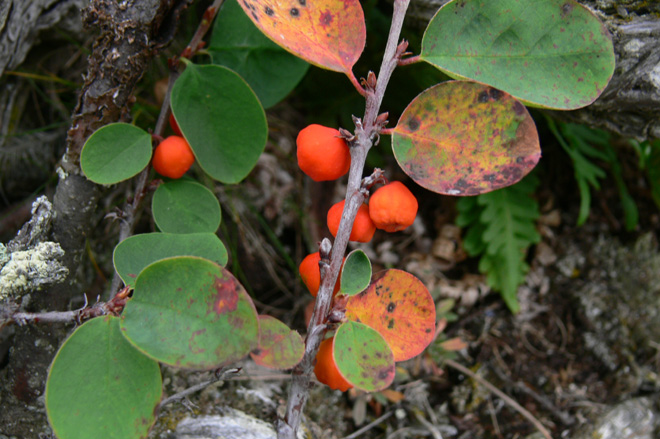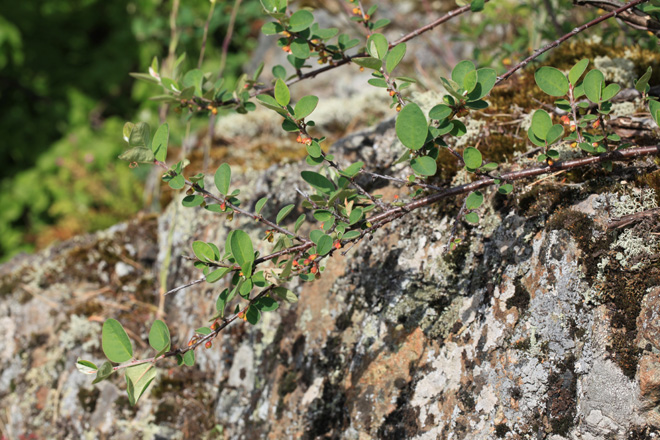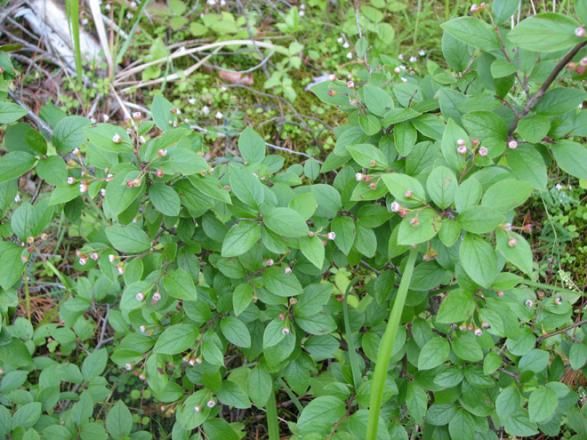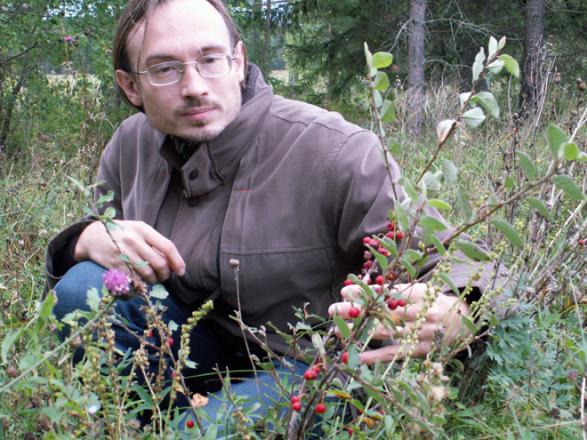Taxonomy and distribution of Cotoneaster (Rosaceae) in Northern Eurasia
Curator Alexander Sennikov
The genus Cotoneaster Medik. (Rosaceae) is one of the species-rich genera which taxonomy is complicated by interspecific hybridization and apomixis. Another complication is added by phenetic plasticity of these plants, typical of many arboreous taxa. As a result, practical identifications in herbarium collections and regional inventories are very difficult and often lead to erroneous results.
The genus is subject to conflicting classifications, with the maximum of about 400 species recognised in the latest monograph of Fryer & Hylmö (2009). Its centre of diversity lies in south-western China.
 The need to make thorough inventories of nomenclature, synonymy, diagnostic characters, species delimitation and distribution of the species of Cotoneaster comes from the projects Euro+Med PlantBase and Atlas Florae Europaeae. I intend to revise all accessible herbarium collections in East Europe, the Baltic countries and some other adjacent territories, in order to improve taxonomic treatments and contribute to mapping. At present, the relevant collections of H, TUR, LE, LECB, MW, MHA, PTZ, PZV, KPBG, LATV, RIG, DAU, MSK, MSKU, UDU, and some minor Herbaria are completely revised. The information is georeferenced and incorporated in Atlas Florae Europaeae.
The need to make thorough inventories of nomenclature, synonymy, diagnostic characters, species delimitation and distribution of the species of Cotoneaster comes from the projects Euro+Med PlantBase and Atlas Florae Europaeae. I intend to revise all accessible herbarium collections in East Europe, the Baltic countries and some other adjacent territories, in order to improve taxonomic treatments and contribute to mapping. At present, the relevant collections of H, TUR, LE, LECB, MW, MHA, PTZ, PZV, KPBG, LATV, RIG, DAU, MSK, MSKU, UDU, and some minor Herbaria are completely revised. The information is georeferenced and incorporated in Atlas Florae Europaeae.

In addition to East Europe, the Czech and Slovak collections of BRNU and BRNM are of special interest because of the monographic activity of Anežka Hrabĕtová-Uhrová, and the Hungarian collections of BP, BPU and DE are of interest because of dendrological works of János Domokos. These collections were revised to establish synonymy. Besides, the Hungarian collections were completely revised for distribution records, and the species of Cotoneaster were mapped in Hungary anew (the data are incorporated in Atlas Florae Europaeae).
The plants of Cotoneaster are most frequently found on rocky substrates, usually not sheltered by other plants. In the lowland territories of East Europe the species of Cotoneaster are relics of postglacial times and therefore legally protected. In some special cases the assessment of localities is needed for conservation purposes.
 The species of Cotoneaster, both native and alien, are widely cultivated as ornamental plants in East Europe. They may run wild and get occasionally established locally. Alien occurrences and remnants of old cultivation sometimes obscure the picture of native distribution.
The species of Cotoneaster, both native and alien, are widely cultivated as ornamental plants in East Europe. They may run wild and get occasionally established locally. Alien occurrences and remnants of old cultivation sometimes obscure the picture of native distribution.

Published outputs:
- Sennikov, A.N. 2009: Cotoneaster. — In: Greuter, W. & Raab-Straube, E. von (eds.), Euro+Med Plantbase – the information resource for Euro-Mediterranean plant diversity. Published on the Internet http://ww2.bgbm.org/EuroPlusMed/PTaxonDetail.asp?NameCache=Cotoneaster&PTRefFk=7300000
- Sennikov, A.N. & Somlyay, L. 2011: Atlas Florae Europaeae notes 17. Typification of Cotoneaster tomentosus (Rosaceae) and its synonyms. — Taxon 60(2): 579–584.
- Sennikov, A.N. 2011: Proposal to conserve the name Mespilus tomentosa (Cotoneaster tomentosus) against Mespilus orientalis (Rosaceae). — Taxon 60(2): 606.
- Sennikov, A.N. 2011: Atlas Florae Europaeae notes 18. Synonymy and distribution of some native and alien species of Cotoneaster (Rosaceae) in Eastern Europe and the Caucasus. — Ann. Bot. Fenn. 48(4): 325–336.
- Somlyay, L. & Sennikov, A.N. 2012: Two new alien Cotoneaster species naturalized in Hungary — Kitaibelia 17(1): 141.
- Somlyay, L. & Sennikov, A.N. 2013: Cotoneaster tomentosus in the North Hungarian Mountains. — Kitaibelia 18(1–2): 176–177.
- Sennikov, A.N. & Phipps, J.B. 2013: Atlas Florae Europaeae notes, 19–22. Nomenclatural changes and taxonomic adjustments in some native and introduced species of Malinae (Rosaceae) in Europe. — Willdenowia 43: 33–44.
- Sennikov, A.N. 2013: Cotoneaster antoninae Juz. — Page 160 in: Raab-Straube, E. von & Raus, T. (eds.), Euro+Med-Checklist Notulae, 1. Willdenowia 43: 151–164.
- Sennikov, A.N. 2013: Cotoneaster Medicus. — Pp. 49–80 in: Kurtto, A., Sennikov, A.N. & Lampinen, R. (eds.), Atlas Florae Europaeae, vol. 16. The Committee for Mapping the Flora of Europe & Societas Biologica Fennica Vanamo, Helsinki.